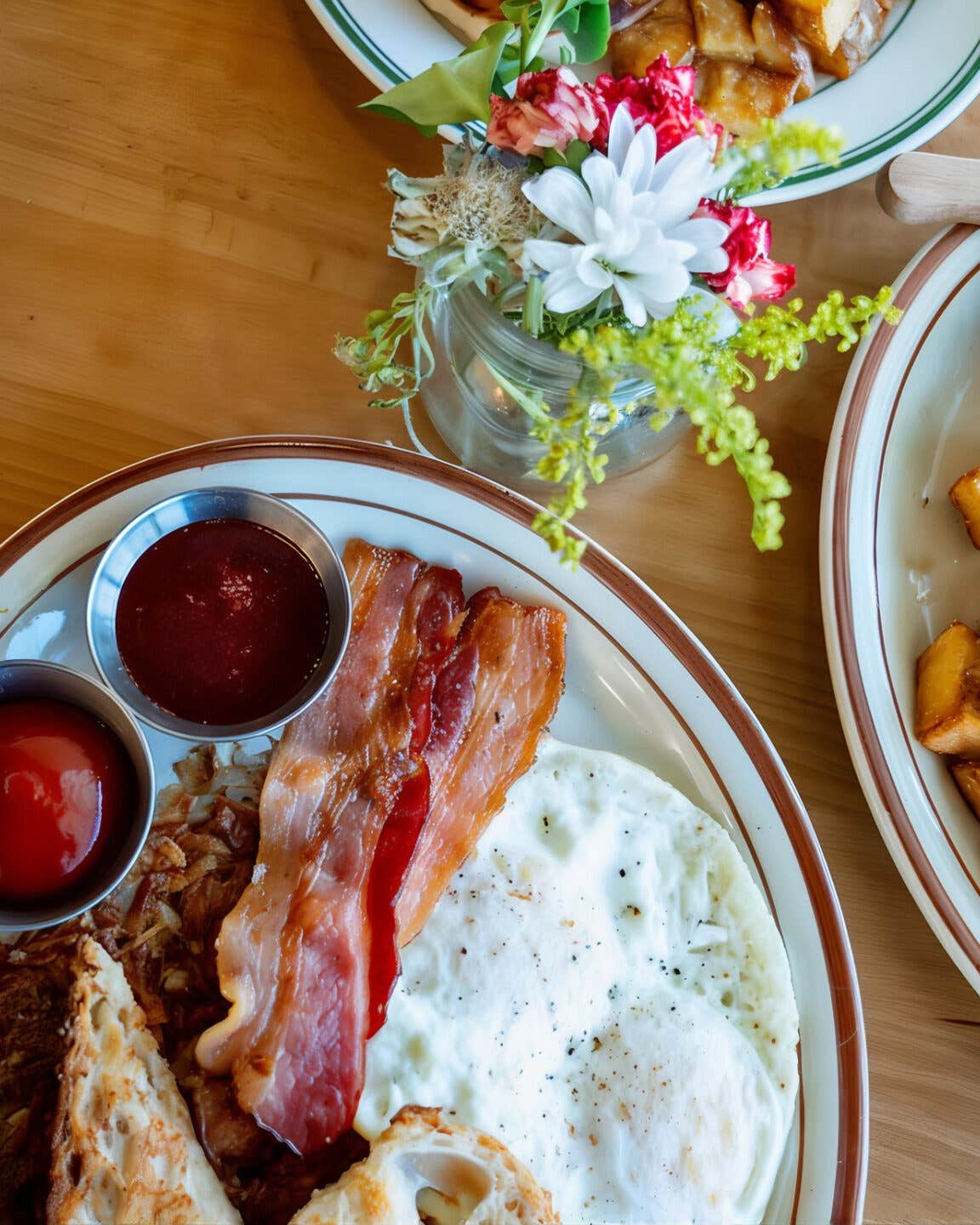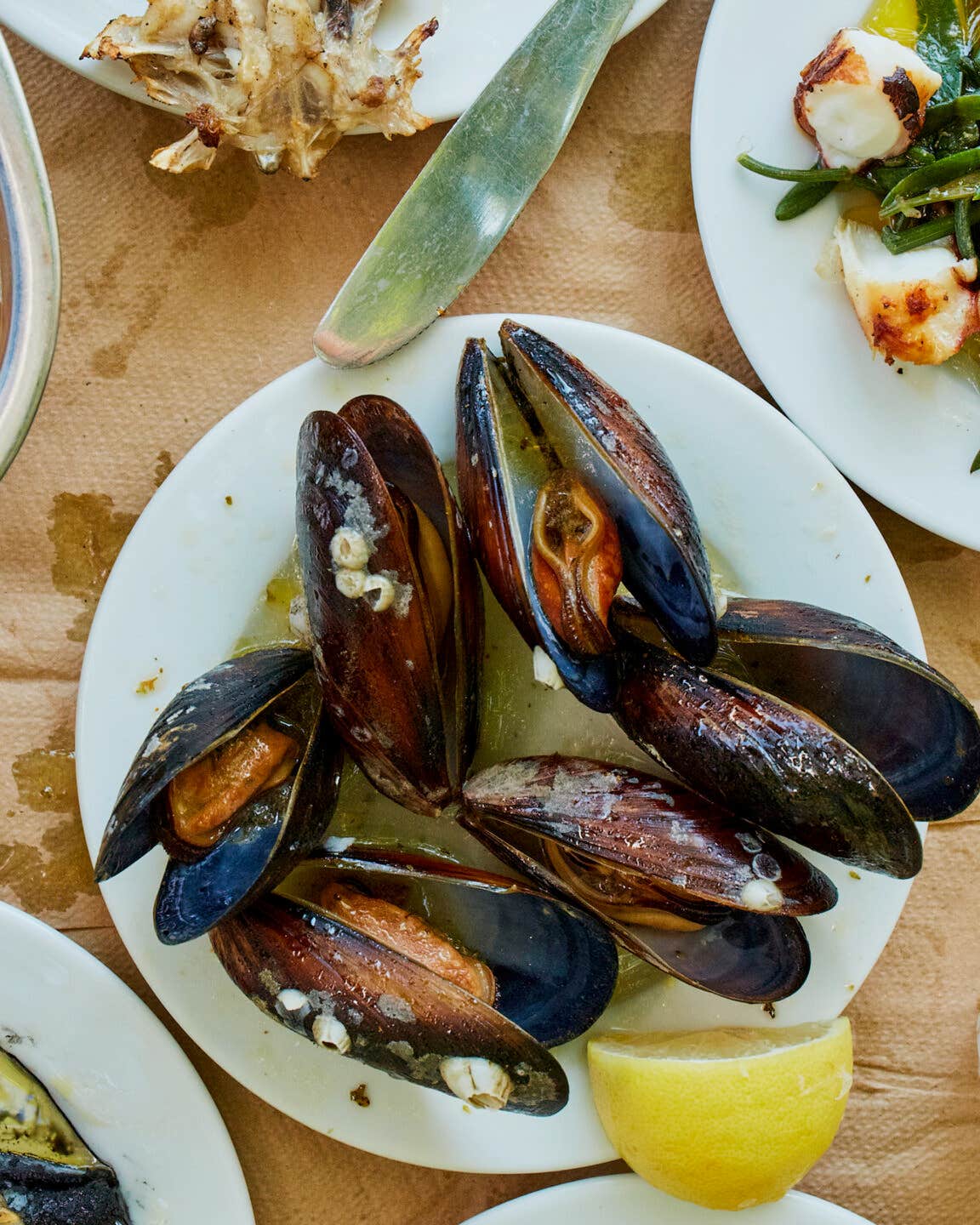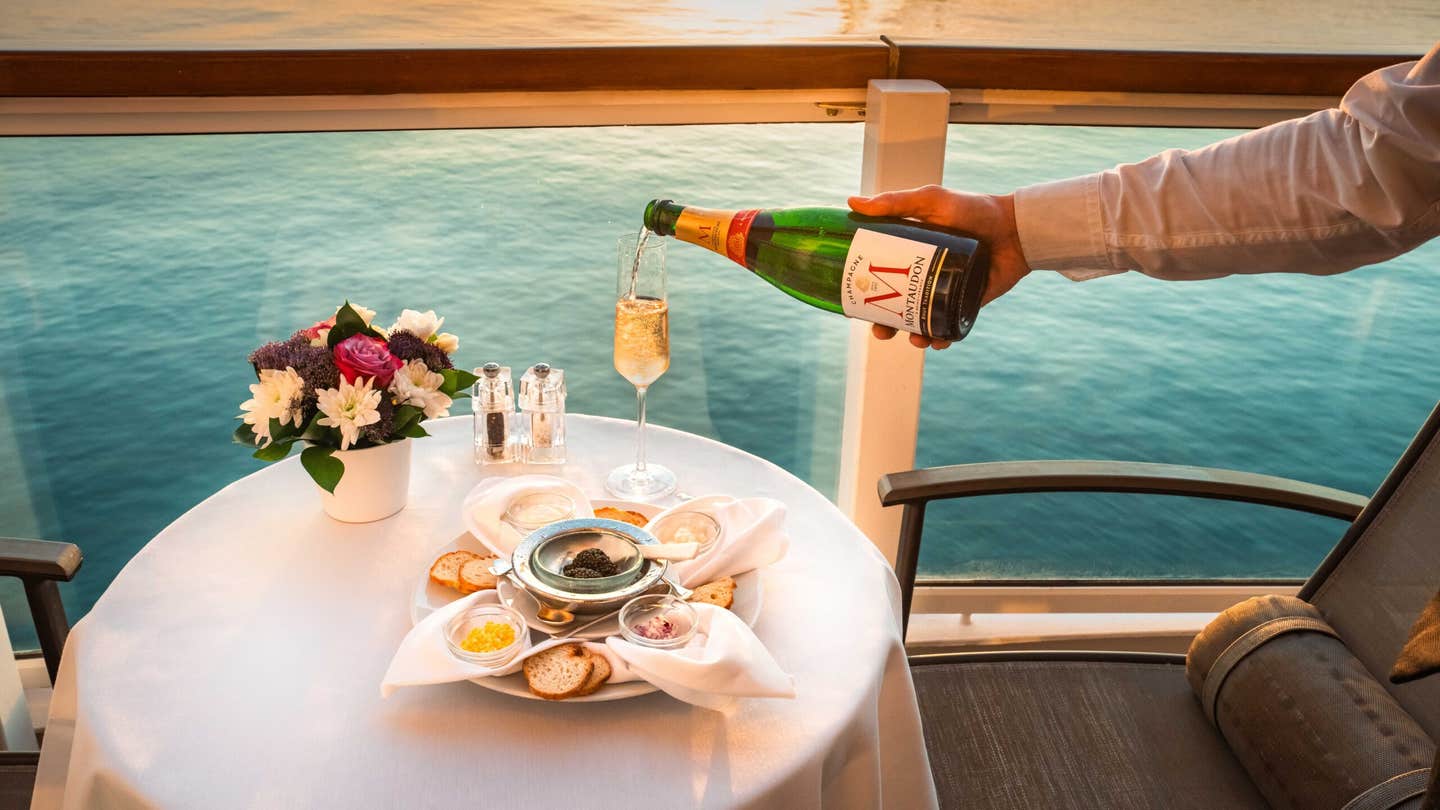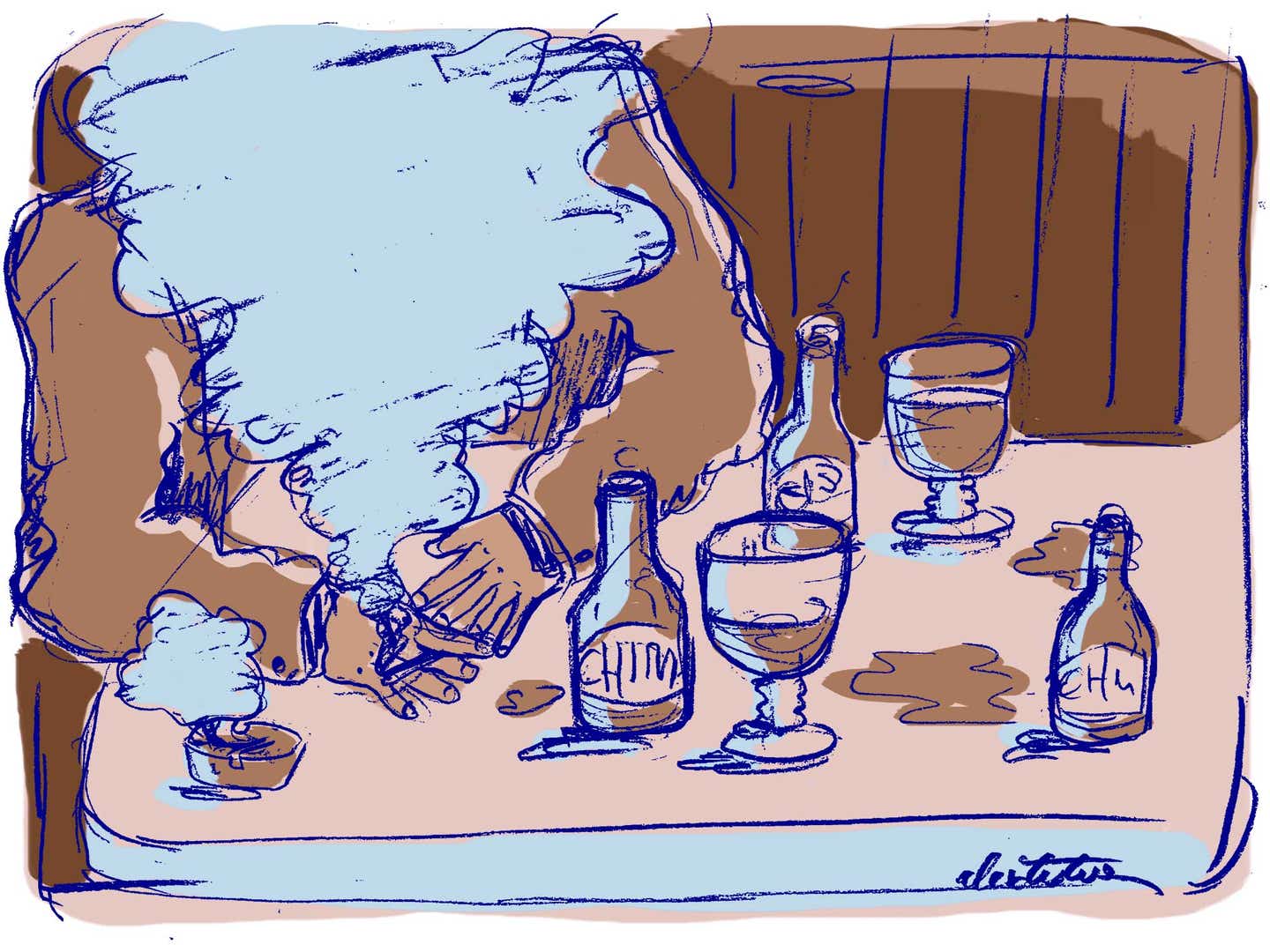
The Unstoppable Allure of Antwerp’s Brown Cafés
Why these formerly smoky, not-quite-dive-bars with excellent beer and better conversation define the spirit of one of northern Europe’s most cosmopolitan cities
On my first trip to Antwerp in January 2009, I arrived on a cold, brittle Sunday night and was disappointed to find practically everything closed, save a single bar on the corner of the Dageraadplats in the heart of the fashionable district of Zurenborg: Café Zeezicht.
Golden light poured out through the windows. Inside, a pall of cigarette smoke blurred the worn wooden edges. My travel companions and I ordered our beers, took our seats, and, all three of us part-time smokers living in a place where the practice was well on its way to official criminality, pulled cigarettes from our pockets with the giddy timidity of children muttering curse words when mom and dad are out of earshot.
In no time, a group of dashing young epidemiologists from the School of Tropical Medicine had taken the table next to ours. “Do you know our Trappist beers?” one of them asked. We said we didn’t and they proceeded to order round after round of Orval and Rochefort and Westmalle, beers bitter and malty and sweet and rich, all made in monasteries scattered around the Lowlands, and, to a one, clocking in around 8% alcohol. By the time we’d completed our crash course, we’d stopped feeling shy and given over to flirting, smoking, and drinking with Flemish abandon.
The doctors-to-be described Zeezicht as a brown café, Antwerp's answer to a London pub or a New York dive, and told us the name came from the color of the walls, stained teabag-brown from years of steeping in cigarette smoke. The city's oldest brown café dates to the mid-16th century, the apogee of Antwerp's wealth and influence as northern Europe's banking hub and a global center for the trades in spices, sugar, silver, and diamonds (it's still a diamond town and home to the second largest port in Europe). Merchants from Spain, Venice, and England settled there. Catholics and Protestants and Jews coexisted peacefully, welcome so long as they contributed to the city's prosperity. Welcoming and warm and relaxed, brown cafés are small monuments to that cosmopolitan tradition.
When I returned to Antwerp back in March, seven years after that first visit, the cigarettes had disappeared (the final ban came in 2011), but the brown cafés seemed otherwise unchanged, populated, as ever, by an equal mix of cat-toting old timers and cool young kids, who came not as a matter of fashion, but as a matter of course. Clearly the doctors’ explanation of the bars’ nomenclature had been wrong. Before leaving for my trip, I spoke with Kees Bloemendaal, who owns a brown café, to find out what the term actually means, but even he seemed unsure. “Everyone would define a brown café differently,” he conceded, “but the staff have to know the people who come regularly.” I asked if the bars had to be old. The city’s most famous brown café, Den Engel, dates back to 1903. Many others have been around since the 60s and 70s, but others, he said, have opened far more recently. “Maybe they have to feel old,” he said, with a diffident shrug.
A week later, on my first night in town, I went for dinner at a swish Italian joint around the corner from Zeezicht, where a pair of busboys told me that brown cafés have to have “lots of different beers and old people and they have to be kind of dirty.” They suggested I try a place called Den Billekletser that has occupied the same corner in the old city, just below the towering gothic cathedral, since 1979. I went by the next afternoon, took my seat at the bar, scanned the handwritten list of some three-dozen beers, and passed over the city’s local amber brew, De Koninck, in favor of a La Chouffe: a boozy unfiltered blond far less innocent than the frolicking gnome on its label might suggest. Tina, who served it to me, has worked the bar there for more than a decade. So I asked her, too: What makes a brown café?
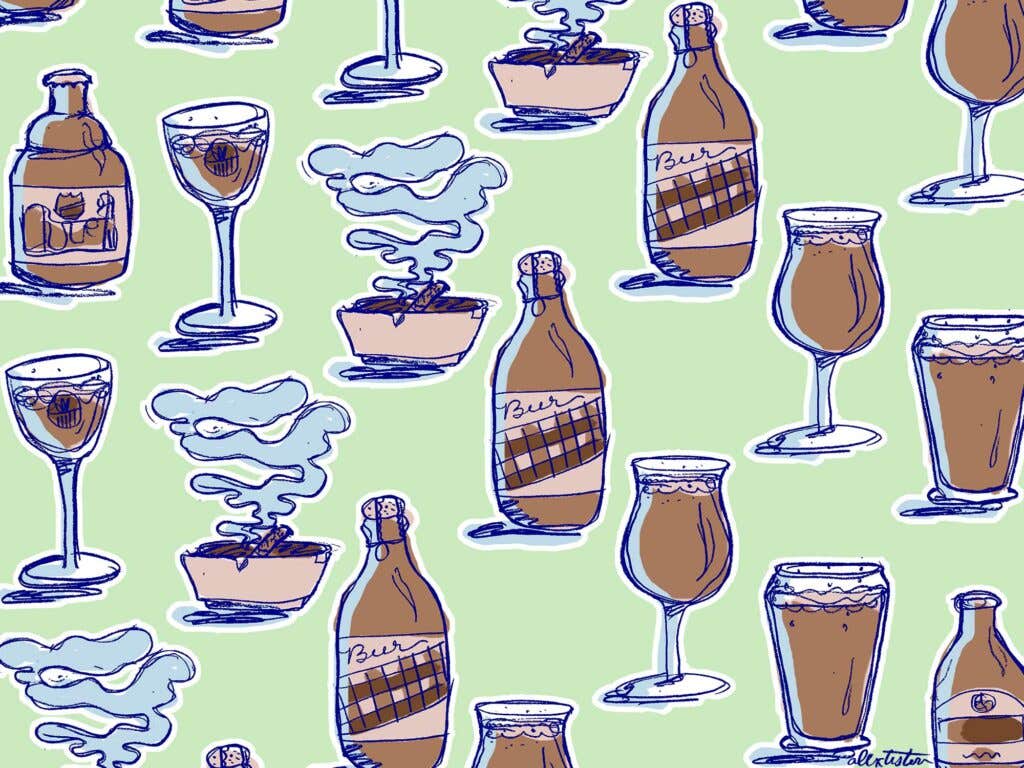
She noted the color of the tables and chairs uncertainly, then said, “I find that everyone can come here: locals, tourists, classy people, even children.” She eyed the dark wood wainscoting with maternal affection. “It’s like a family—people will tell you their story,” she added, then proceeded to tell me part of hers: “Before, I was studying to be a social worker, but I left to come back here. My mother always said she was sad I didn’t go into social work,” she winked, “but I tell her, ‘Believe me: I do social work.’”
A few stools away, a regular called Etienne chimed in. “Brown cafés have to have lots of local guests,” he said. “It’s important that a musician can step inside and ask to play and it’s tolerated to bring dogs or children or to play cards.” So it should feel like your living room, I offered. Etienne nodded. His friend, returning from a cigarette break out front, added, “Even if you’re from another city, you go to a brown café and you know you’re in Antwerp.”
Though some of the bar owners I met in Antwerp lamented the gradual disappearance of the brown café, in the city’s compact center, you’ll still find one on virtually every corner (since there’s no clear definition for what makes a brown café, it’s impossible to get a definitive count). And unlike so many of the places we might now classify as dives, brown cafés don’t feel like dress-up versions of themselves. They’re not relics, but they’re not exactly trendy, either. They don’t belong to any particular time or demographic. They’re where the city goes out to meet itself, places where even an outsider like me can wander in for a drink and end up chatting with a Tina or an Etienne or, on a good night, a handsome doctor.
I left Den Billekletser and went a few blocks down the road to a place called ‘t Half Souke. An old woman at a table near the door pored over a newspaper, tipping Cognac from a bulbous snifter into a highball of cold chocolate milk. At the bar, a bearded man in a floppy fisherman’s cap leaned on a cane and drank a glass of red wine with surprising delicacy, chatting happily between dainty burps. The bartender, seedily elegant and alluringly stern, presided with gruff nonchalance.
When the old timers left, the bartender and I got to talking—or rather, she did, wandering over the accordion folds of the linoleum floor, an effective booby trap set for inebriated newbies. She told me how she accidentally inherited the bar from her “man” when he died 18 years ago (I told her I was sorry to hear that; “pff,” she responded, “the pain is over”). She told me the life story of the homeless guy who sits out front, the son of a regular customer. She lamented the death of conversation, which, to her, meant the death of the brown café.
"30 years ago there were 2,000 bars in Antwerp, but the world has changed," she heaved a weary sigh. "Now everyone has computers and smart phones—and they say the drinks are expensive. Pff! Young people!" She complained about the airless density of the city—"it's suffocating, man"—and railed against the cigarette ban. "At first we had a very Belgian solution: If you sell food, no smoking inside. If you don't, smoking is fine," she shrugged. "Belgians: We have a tradition of compromise."
The next morning—March 22nd, 2016—that tradition of compromise came under attack. A series of explosions tore through the airport and metro in Brussels, the city that has, in the last century, taken up Antwerp’s old mantle as capital of Europe. Both the bombs themselves and the hideous rhetoric that ensued targeted the same openness and cosmopolitanism that have for centuries made this cold, dim corner of Europe so exceptional.
On the night of the bombing, I returned to Zeezicht. Whatever the bartender at ‘t Half Souke might have said, there seemed to be plenty of young people—and plenty of conversation. Dozens of 20- and 30-somethings sat outside drinking beers and rolling cigarettes. Inside, the crowd was boisterous and jovial, the young and fashionable sharing space with old regulars, all of them out despite the cold and the horrors the morning had wrought.
I looked around the bar, still my favorite on earth, and remembered that first night seven years before, wandering out into a fine, fresh dusting of snow, warm with alcohol and the attention of strangers, flush with freedom. It was different, of course, seven years later. The epidemiologists weren't there and I couldn't smoke inside—it's 2016; the world has changed—but Kees and Tina and Etienne were right: That's not what makes a brown café.
Must-Visit Brown Cafés
Café Zeezicht
Dageraadplaats 7-8, Zurenborg
+32 3235 1065
Der Billekletser
Hoogstraat 20, Centrum
+32 485 97 38 93
't Half Souke
Hoogstraat 59, Centrum
Café Pelikaan
Bosuilplein 1, Centrum
+32 3630 4015
Den Engel
Grotemarkt 3, Centrum
+32 3233 1252
Keep Reading
Continue to Next Story







